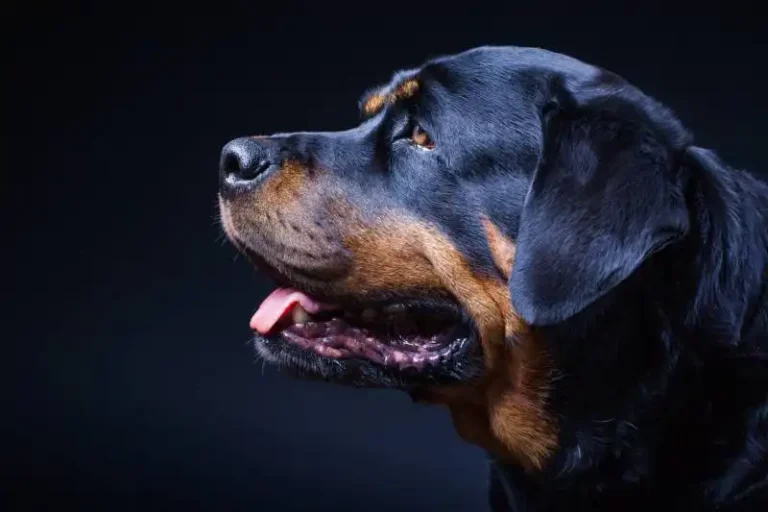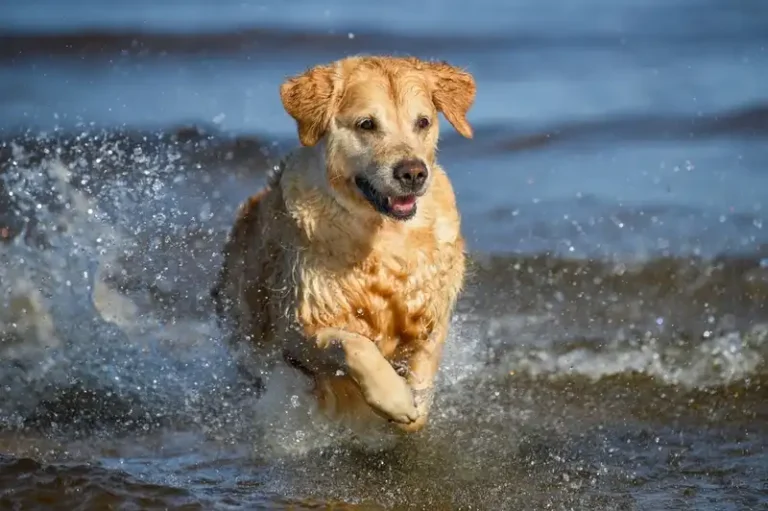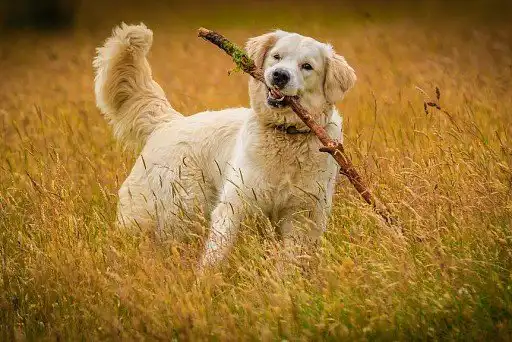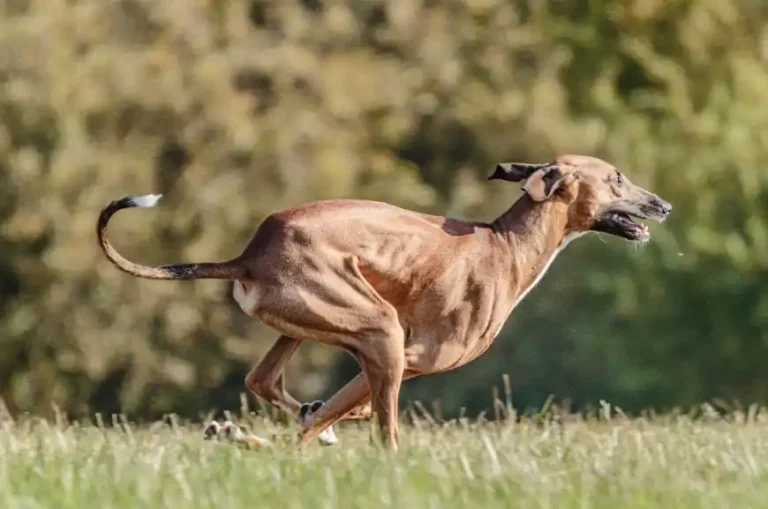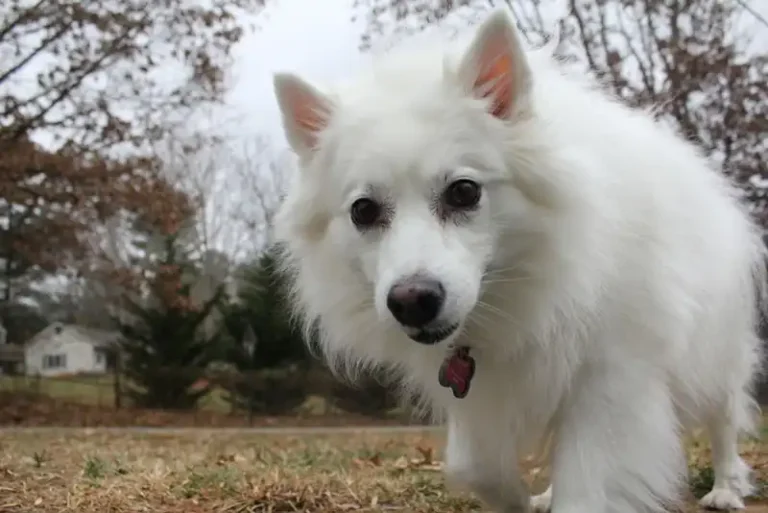Chow Chow Character Size and weight Description
The Chow Chow is a proud and unperturbed dog that can be both a fearless protector and a devoted friend.
Country of origin: China
Size: medium
Height: 46-56 cm
Weight: 20-32 kg
Age: 8-12 years
FCI breed group: Spitz and primitive type breeds.
Basic Facts About Chow Chows
They have an unusual purple-blue-black tongue (in nature, this is also found in the Shar Pei, giraffe and polar bear). They are also the only ones of their kind that have a bluish tint to their lips and mouth (other breeds have black or piebald mouths).
Due to the peculiarities of the structure of the hind limbs, Chow Chows walk as if on stilts.
They have an innate tendency to dominate. They put themselves on equal terms only with the person they consider the master.
The special position of the ears gives the animal’s face a slightly frowning appearance.
They have good hearing and a keen sense of smell, and react instantly to suspicious odors and sounds.
The analyses carried out by specialists confirm that the Chow Chow is the oldest breed. There are assumptions that they existed 2,000 or even 3,000 years ago.
Historical background
The history of the breed’s origins began in ancient times in China and Mongolia. It is believed that the ancestors of the Chow Chow came to these territories from northern Siberia, having appeared there by crossing dogs with the polar wolf, and the main evidence of this is their unusual purple tongue.
The exact time of the first mention of the breed is not known for certain, but these dogs have existed for at least 2 thousand years and are considered to be among the first on the planet. Due to the fact that China was a closed country for visiting until the 19th century, the breed did not spread beyond its borders. Its first representatives appeared in Europe approximately in the 1830s, and the description of the dog was made at the end of the 18th century by the traveler and explorer Marco Polo.
According to the legends of ancient China, Chow Chows guarded and herded cattle, were used in hunting, and served as guard dogs. Ancient treatises describe their use as sled animals for transporting goods. Dogs of this breed served as personal guards for the ancient emperors of the Celestial Empire and were excellent family dogs.
Modern Chow Chows are the result of long-term selection and evolution; they still live in the ancient mountain monasteries of China and Mongolia.
Today, this is a fairly common dog breed in the world. According to the American Cynological Federation, more than 10,000 individuals are registered each year.
Eyes
These dogs have deep-set, almond-shaped eyes of medium size. The color is dark, but in blue and cinnamon colored individuals, eyes in the color of the coat are allowed.
Ears
Chow Chows have thick, small ears that are set firmly. They are triangular in shape and have rounded tips. They are set wide apart, tilted toward the eyes and towards each other. This gives the dog’s muzzle a specific frowning expression.
Neck
These dogs have a neck that is large and powerful, sits firmly on the shoulders, and has a slight bend. The length of the neck allows the Chow Chow to hold its head high and with dignity.
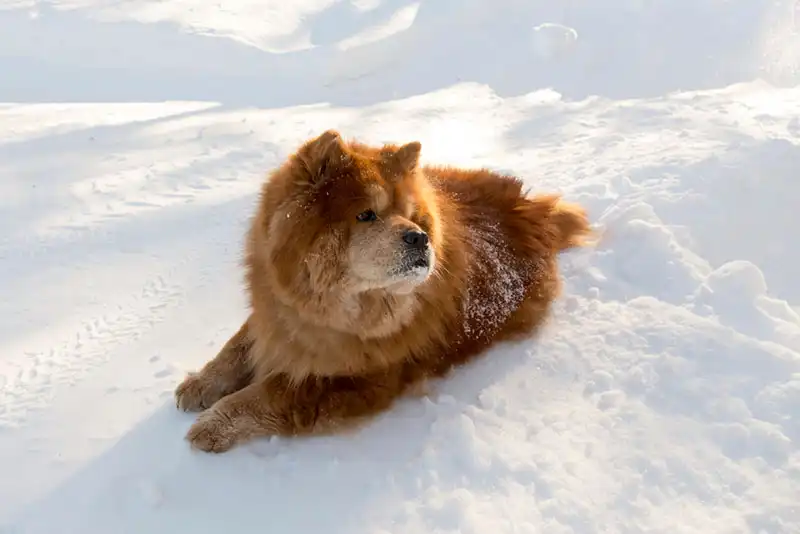
Frame
Representatives of this breed have a straight and short back with a powerful loin. The chest of dogs is wide, the ribs are rounded and noticeably pronounced.
Tail
In these dogs it is located high, curved in an arc and lies on the back. It looks very unusual and unique – it is not shortened, not twisted into a spiral or ring, does not rise, but fits tightly and straight to the back.
Limbs
The paws of the Chow Chow are rounded, small and rest firmly on the toes. The dog, when moving, places its paws almost like representatives of the cat family.
These animals have muscular shoulders and straight, strong forearms. The elbows are located at the same distance from the highest point of the back and from the ground.
The Chow Chow’s hindquarters have well-developed thighs, shins, and knees with softened angles. When viewed in profile, the hind legs are positioned directly under the hip joints.
The hocks are set low and have little bend, giving the Chow Chow a slightly stilted gait.
Movements
Representatives of this breed walk with a short step. Their hind legs barely touch the ground, do not rise high, from the side the gait resembles the movements of a pendulum. This feature allows the animal to move easily, spending little energy and saving strength.
Wool cover
The Chow Chow’s coat is notable for its great density. Around the neck there is a collar similar to a lion’s mane.
There are long-haired and short-haired varieties of the breed.
Long-haired individuals have a very thick, abundant coat that does not lie close to the animal’s body. In such dogs, the outer hair is hard, and the undercoat, on the contrary, is soft and fluffy.
Short-haired Chow Chows have short, plush, dense fur that does not lie close to the body but stands upright.
Color
Dogs of this breed can be black, red, cinnamon, blue, cream (or white). Their shades are often found (but without the presence of spots) – the lower part of the tail and the back of the thighs of the Chow Chow sometimes have a lighter tone.
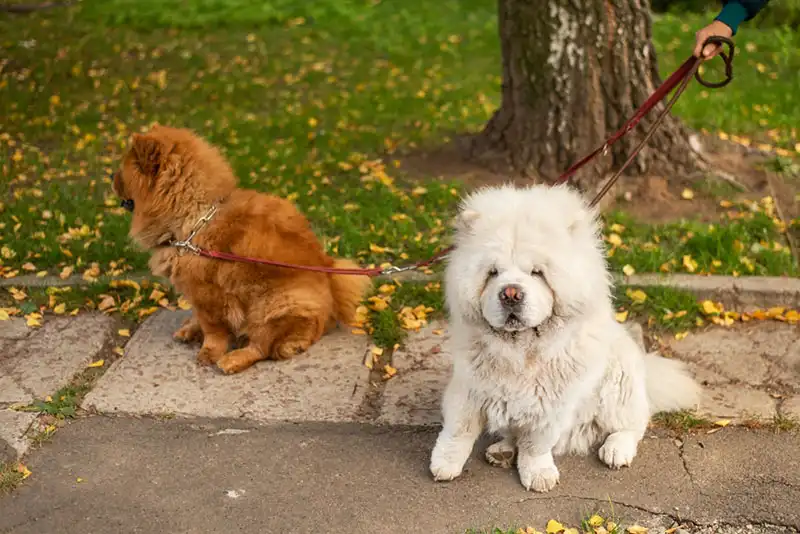
Size and weight
These are medium-sized animals. Males are slightly larger than females. Males range from 48 to 56 cm in height, females are smaller – 46-51 cm. Males weigh from 25 kg and can reach 32 kg. Females usually weigh 20-27 kg.
Character of the Chow Chow
These dogs are distinguished by their independent character. They tend to make their own decisions. Therefore, it is important for the owner to find the right approach to the pet, being able to find compromises, using verbal and “tasty” rewards.
Chow Chows are quite willful, their temperament is often compared to that of a cat. But at the same time, these animals are very loyal and devoted, because they are dogs after all. Such a dog will obey only the person it considers the “leader of the pack.”
Chow-chows do not accept excessively active loads; outside, they prefer to simply rest aside and watch their relatives, especially long-haired varieties of the breed. Short-haired dogs behave more cheerfully, can run and play a little. At home, dogs also prefer passive rest and mostly lie on the sofa or on the floor.
Chow Chows only seem gloomy because of the special expression on their faces, but in the family these pets behave friendly and are very affectionate with household members.
They choose one owner and adore him all their lives.
They get along well with other family members, including children. They do not immediately make contact with strangers. They are reluctant to get along with cats. They can be jealous of other dogs, as they have a well-developed sense of attachment to their territory.
Chow Chows are very economical, they believe that everything in the house is under their watchful control and protection. They will feel great outside the city, on a plot with a large fenced area.
Chow Chows are fearless, powerful and hardy dogs – guard and shepherd – their original purpose. Nowadays, such animals are kept mainly as family pets, but they still remain good guards. The dogs will not let a stranger into their territory and, if they sense danger, will always warn the owner about it.
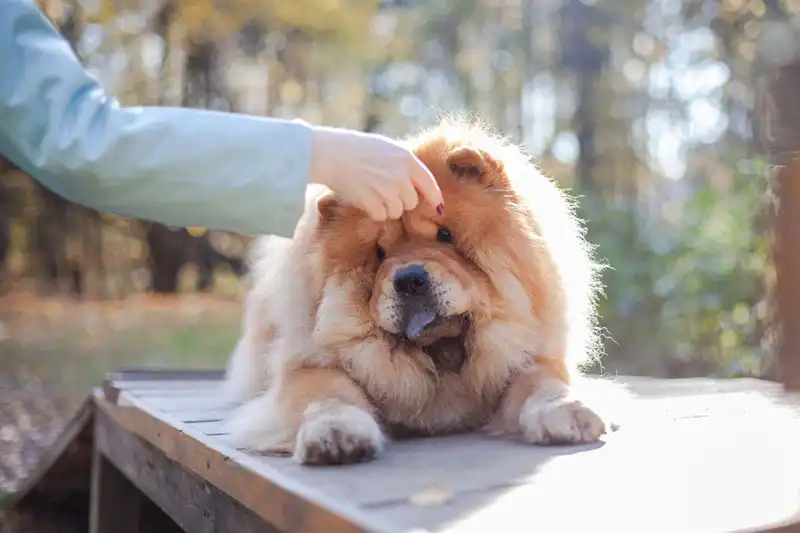
Education and training
Early socialization and proper training of chow chow puppies will help to raise an obedient and friendly dog. The training of the animal should be based on the owner’s patience, kindness, encouragement and regularity of training.
A puppy that has settled in a house needs help in adapting, a lot of care and attention, because at first he will feel lonely and uncomfortable in a strange place.
In order for the baby to get used to the new home better, you need to devote maximum time to it. But you should not bother it with your constant presence, constantly stroking and picking it up. During this period, the dog needs as calm an environment as possible. The little chow-chow should want to communicate with the household members.
It is necessary to decide where his bedding will be for sleeping and resting, to allocate places for food and toilet . If the dog is scared and whines, you need to pick him up, carry him to the bed, sit next to him, calm him down, stroke him, talk to him in a quiet tone. The puppy should understand that he was not abandoned and that his new family takes care of him.
It is believed that Chow Chows are reluctant to be trained and it will not be easy for novice breeders. They are truly independent and love to show their “I”. But if you find the right approach to your pet, training will go off without a hitch.
They clearly know if there is a treat for them, and they recognize when it is time to play and when it is time to work.
If the training is boring, lacking variety, if you reward the dog rarely and little, it will get bored and stop training. To prevent the pet from getting tired, 5-6 repetitions of one exercise and rewarding with a treat after each time are enough. With adults, training lasts longer – about half an hour, with puppies – 10-15 minutes.
It is important to learn your dog’s body language to understand what it is “saying.” Chow Chows are very smart and will always show when they are happy and when they are uncomfortable. If you do not learn to recognize these signals, you can lose the emotional connection with your pet.
In no case should you allow harsh treatment, either with this breed or with any other. Only by affection can you achieve the desired result from the animal.
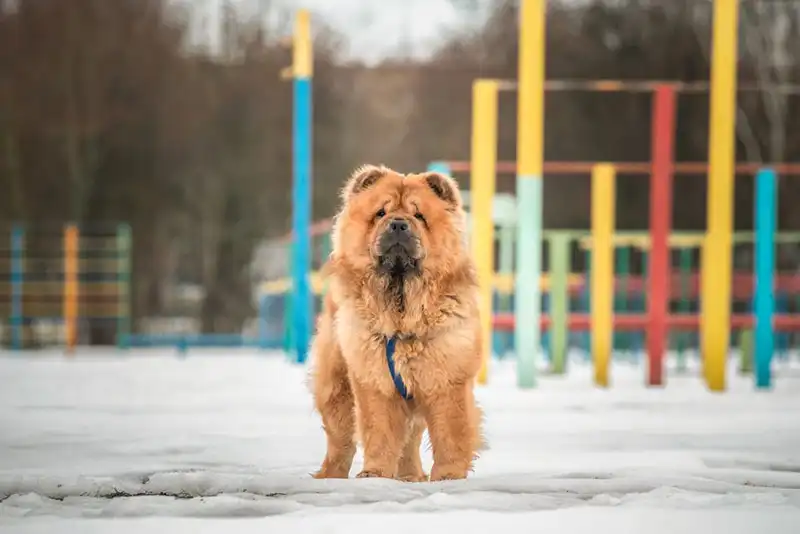
Keeping dogs
From the first days, the puppy needs to be accustomed to hygienic procedures. This will help him to calmly relate to them in the future.
Representatives of the Chow Chow breed have abundant double hair, which requires regular care. It must be carefully combed . The number of procedures depends on the type of coat: long-haired dogs – two to three times a week, short-haired dogs a little less often – once or twice.
Chow Chow puppies are brushed daily, as their fur structure is different from that of adults. The soft and light fur of babies gets tangled faster and collects various debris.
After each meal, the pet’s muzzle should be cleaned of food residues and dried with a hair dryer to prevent fungus and skin irritation. After the dog drinks, it is also better to dry the fur with a towel or hair dryer.
To comb out the Chow Chow’s fur you will need: an iron comb with sparse, long, blunt teeth (they should not scratch the dog’s skin), a massage brush, and a soft slicker brush.
You need to comb the puppy very carefully so as not to cause him discomfort, otherwise the procedure will cause him negativity, and next time he will not want to do it. It is difficult for puppies to sit in one place for a long time, so you do not need to comb him completely at once. You can do this in several stages. After the procedure, you need to praise the dog for good behavior and give him a treat.
Chow Chows need to be washed as they get dirty – about once a month. For bathing, use a special shampoo, which is foamed and applied to the coat with a sponge. Before drying the dog with a towel, it is advisable to collect water from the coat with a piece of artificial suede.
After washing, it is recommended to dry the Chow Chow’s fur with a compressor or a regular hair dryer. Dry in the direction of hair growth using a comb and antistatic.
The pet’s claws need to be trimmed as they grow. Claws are trimmed with a claw cutter. If during the procedure the claw is cut a little more and a blood vessel is affected, a disinfectant should be applied to the wound. It is advisable to carry out the procedure carefully and try to avoid this.
Every day, you need to examine the ears and eyes of the Chow Chow. If there is a dark coating in the ears, they need to be treated with cotton wool and lotion. If the eyes suddenly leak, they also need to be wiped with a veterinary product. The pet’s lips can be treated with chlorhexidine and make sure that there is no dirt or pimples on them.
Chow Chows are not very active and need moderate exercise. Walks with them should be leisurely and not very long.
What to feed?
There are two options for feeding dogs – ready-made industrial dry and wet food and natural products. Which one to choose? It is up to the owner of the chow chow to decide.
It is necessary to consult a veterinarian or nutritionist and then decide on the type of diet for your pet, taking into account the dog’s taste preferences, the characteristics of its body and health. The main thing to remember is that the animal’s food should be dominated by protein and the correct balance of nutrients.
Often dog owners prefer to use industrial feeds, it is very convenient. You just need to measure out a portion according to the instructions and pour it into a bowl. A nutritionist or veterinarian will help you choose the brand of feed that is most suitable for your Chow Chow.
Industrial feeds are either complete or incomplete. Manufacturers are required to indicate the type of feed on the packaging.
Complete foods already contain all the nutrients a dog needs for a healthy life. Incomplete foods need to be supplemented with missing vitamins, which should be recommended by a veterinarian.
The amount of food that a Chow Chow needs to be fed is strictly individual, and only a specialist can calculate it. The norm depends on the weight and age of the animal and on how much energy the dog expends. Puppies need more calories than adult dogs. But you can’t overfeed babies either – this can lead to too rapid growth and, as a result, to problems with the musculoskeletal system.
Organizing a diet with natural products is much more difficult. You will have to turn to professionals to calculate the caloric content and balance of proteins, fats and carbohydrates; it is impossible to do this correctly without special knowledge. In addition, you need to additionally purchase and give the dog the necessary vitamin and mineral supplements prescribed by the doctor, spend time buying products, weighing ingredients and preparing dishes.
It is always important to remember about dangerous food for dogs – chocolate, bones, grapes, raw meat and fish, onions and garlic. Any raw meat (poultry, rabbit, beef, etc.) should not be given to your pet, as it may be infected with parasites .
The liver of various animals is offered to pets occasionally, this product can cause an excess of vitamin A, which in turn will lead to damage to the cartilage tissue and problems with the spine. You should not feed the dog from the table, give it fried, fatty, salty and smoked products, all this is very harmful to its health.
Chow Chows are prone to obesity , so you need to be especially careful when choosing a diet. You need to feed your pet strictly on time, a certain number of times and always after a walk . Adult dogs are usually given food two or three times a day, puppies – from three to five times.
The dog should have constant access to water, it is necessary to ensure that the bowl is always full. The water should be changed regularly for fresh water, more often in hot weather.
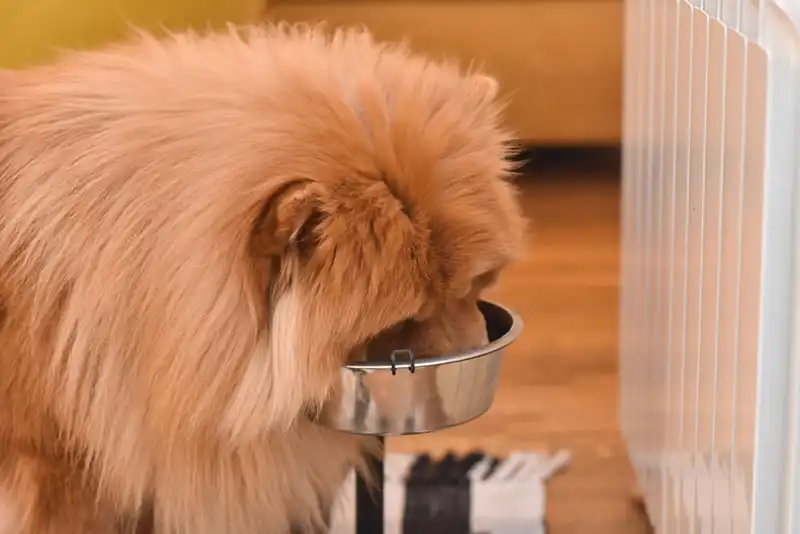
Chow Chow Health
These dogs quickly gain weight, puppies can reach 20 kg by 6 months. It is important to monitor the correct weight gain in a timely manner. When the mass is large, and the joints are not yet formed, dysplasia, arthrosis and arthritis , sprains and ligament ruptures can occur.
To avoid such problems, the pet needs a good muscular corset. To do this, the dog needs to swim in a special pool under the supervision of an instructor. Classes should not be long, as heavy loads can harm health or aggravate existing problems.
For preventive purposes, it is enough to visit the Chow Chow pool a couple of times a week for a month. If diseases of the musculoskeletal system are already present, it is recommended to undergo a longer swimming course after consulting a doctor.
In addition, the special stilted gait due to the straightened angles of the hind legs gives weak cushioning of the joints, which can also cause certain problems for the Chow Chow. The owner must strictly monitor the puppy’s development and nutrition, and be sure to add vitamins to the growing dog’s diet with the permission of the veterinarian.
Because these dogs have loose skin on their heads and muzzles, and they close their eyes like no one else, entropion (inversion of the eyelids) can occur. To prevent surgery, you need to maintain hygiene and keep your pet’s eyes clean – wash the dog’s muzzle every morning and evening.
Chow Chows are prone to allergies and, as a result, skin diseases. In this case, hygiene is also very important. You need to keep your pet clean and treat it for parasites. Even one random flea can cause a strong allergic reaction, lead to flea dermatitis and cause serious damage to the dog’s fur, skin and appearance.
Who is this breed suitable for?
- The Chow Chow is a breed that is well suited for those who want to get a dog:
- Devoted and faithful to one owner;
- Possessing an impressive and attractive appearance;
- A large, clean cat with odorless, self-cleaning fur;
- Does not require long walks and intense physical activity;
- Perfectly guarding the house and its owner;
- Having a high level of intelligence;
- Feeling the emotional state of the owner.
- Chow Chow is not suitable for people who:
- They have no experience in raising and training dogs, these pets need a demanding owner;
- They love long distance walks;
- They expect a stormy expression of emotions from their pet – Chow Chows are distinguished by their calm and phlegmatic nature;
- They don’t have the opportunity to devote a lot of time and effort to caring for the dog’s coat.
Choosing a puppy
Before purchasing a Chow Chow puppy, it is advisable to get an idea of the breed standard, decide on the color and type of coat, and the sex of the pet.
It is also important to decide what the dog is needed for. The selection of a puppy for shows is carried out in strict accordance with the breed standard. And if it is just a pet, you can buy a puppy with an exterior that has differences with it, that is, a pet class.
A Chow Chow for shows should be 8-10 months old when it is taken away from its mother – at this age it is already possible to understand whether its appearance fully corresponds to the standard or not. It is necessary to pay attention to how the dog is socialized, whether it is accustomed to a diaper . Other babies can be taken away from their mother at 2.5-3 months.
The gender of the dog also matters – males look more impressive and are better suited for competitions, but they usually require a more experienced owner.
You need to decide on the type of coat – short-haired chow chows are easier to care for, but a long-haired dog will look more attractive at a show.
Show specimens of the breed should not have non-standard features, such as too light a nose, a spotted tongue, a low-set, curled or not lying on the back tail.
It is necessary to see the parents of the baby chow chow, see what their character is like, whether they have a healthy appearance. Ask the breeder to show their documents.
Puppies must have clean eyes, ears and a place under the tail, a belly without any skin rashes. Small dogs are moderately well-fed, cheerful, active, do not show cowardice, are friendly to guests and relatives.

Personal experience of the breed owners
- We studied the reviews of Chow Chow owners, many of whom noted that these dogs:
- With proper upbringing they will be devoted friends and remain loyal to one owner throughout their lives;
- They look adorable and resemble cute teddy bears;
- They have a high level of intelligence and an analytical mind;
- They have a good sense of a person’s emotional state and are excellent empaths;
- They bark little;
- Chow Chows need short, gentle daily exercise to avoid obesity and joint problems;
- Good guards;
- They are clean, and when walking they avoid puddles and never go into the mud;
- They have a calm and balanced character;
- Treat children well;
- Their coat has no characteristic odor;
- Hygienic grooming is only necessary for show specimens of the breed.
- The owners say the following about the negative aspects of keeping a Chow Chow:
- These dogs have a stubborn and wayward character and need to be trained from an early age;
- You need to be a fairly experienced dog breeder and be able to get along with your pet, otherwise it will grow up disobedient;
- Dogs are prone to allergies;
- Chow Chows try to avoid water procedures, so it is necessary to accustom them to them from puppyhood;
- Shedding is very active, pets need to be combed in a timely manner;
- To ensure that your dog does not have health problems and does not gain excess weight, it is necessary to constantly monitor its diet;
- In hot weather, when the air temperature is +25C and above, it is recommended to walk dogs early in the morning or late in the evening, as pets have a hard time with the stuffiness.
Price of Chow Chow
Prices for dogs of this breed depend on gender, age, color, presence of pedigree and titles of parents. The place of sale, reputation of the nursery and breeder influence the cost.
From 15 to 30 thousand rubles cost pet class puppies with minor exterior deviations from the standard. From 50 to 80 thousand rubles is the cost of the breed class, such dogs will be able to participate in breeding and competitions.
The most expensive show-class chow chow puppies from champion parents cost 85-210 thousand rubles. They are purchased for participation in exhibitions and future championships.
You can buy such a dog from private individuals or at the market for not very much – for 10-15 thousand rubles. These will be puppies without documents and, accordingly, without a guarantee of purebred.







